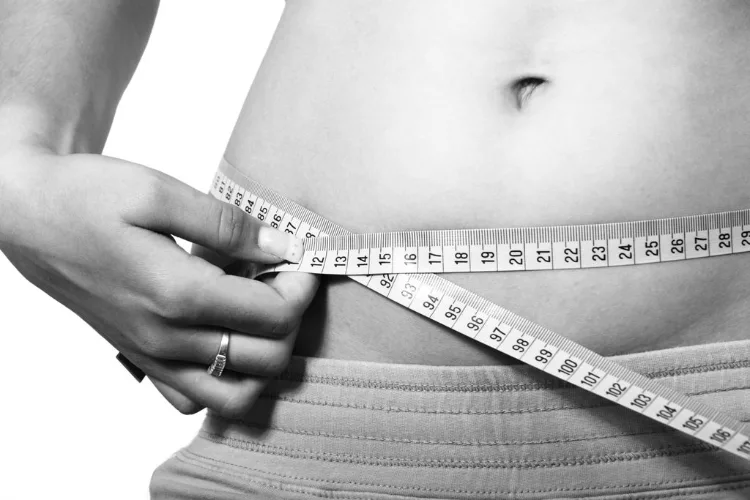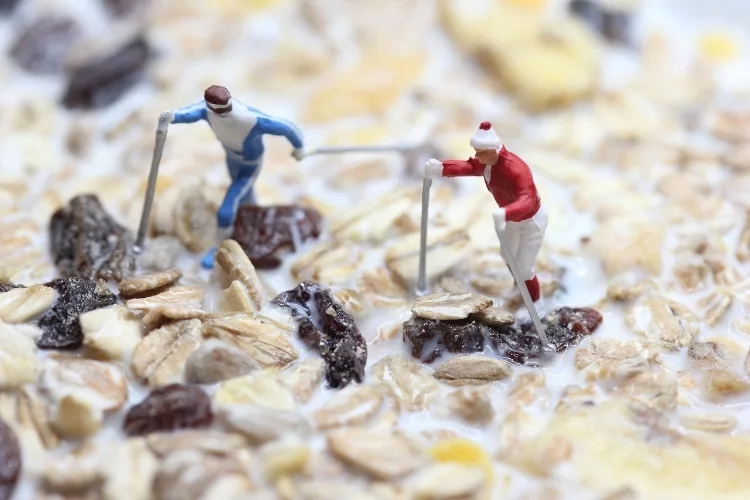How Many Calories Do You Burn in a Day of Skiing
by Frank V. Persall
Skiing is a fun and exciting way to get a fantastic full-body workout that burns calories quickly. How many calories burned while taking part in the popular winter sport depends on the level of effort you're exerting and your weight and body type. Downhill skiing, also known as alpine skiing, is the most common form of skiing.
Contents
How Many Calories You Burn Skiing Depends On The Level Of Effort
Downhill typically burns between 300 and 600 calories per hour. Again, how many calories are burned has a lot to do with your weight. According to Harvard Medical School, a person who weighs 155 pounds can burn 446 calories in an hour of downhill skiing, while someone who is 185 pounds will burn 532 calories during the same period. (Note: This doesn't include time spent on the ski lift).
Downhill Skiing Health and Fitness Benefits

Downhill skiing is an aerobic and anaerobic activity, which is a big reason why it's such a great overall workout and calorie burn. Downhill skiing is a blend of endurance and resistance training. In addition to burning a bunch of calories and being a cardio workout that has positive effects on the heart, downhill skiing improves flexibility, strength, agility, balance, and endurance.
In terms of its cardio aspect, downhill skiing equates to rowing workouts or cycling. Of course, skiing through the deep powder and moguls of advanced-level black diamonds will increase your heart rate more than a leisurely cruise down a green circle, or "bunny slope."
The cardio-metabolic benefits of downhill skiing include improved insulin resistance and glucose metabolism, and a decrease in blood pressure (Blood Pressure Support Help), blood lipids (fat-like substances, of which too many can lead to high cholesterol), and resting heart rate. Downhill skiing (and all other forms of skiing) has been shown to reinvigorate blood vessels and cell health.
For An Even Better Workout, Try Cross-Country Skiing
Cross-country burns more calories than downhill skiing-between 400 and 900 calories per hour. Cross-country skiing is truly a full-body workout. The Olympic sport works your leg and butt muscles and because you're pushing off the ground with each step.
You also use your hip adductors on your outer thighs - muscles that don't even get worked when cycling and running. And that's just the lower body workout. Cross-country works muscles in your shoulders, your biceps, triceps, and back when you use the ski poles to move forward.
It's also a highly functional workout. When cross-country skiing, you're training and conditioning your body to move in a way it was naturally designed to move. Cross-country teaches you to improve the processes that make you more physically capable in your everyday movements. And, as you probably gathered from the nature of the sport, it boosts your endurance. A long-distance winter sport like cross country skiing improves your aerobic fitness as well as running does while giving you more energy throughout the day.

If you're in great shape and excel at cross-country, you can burn up to 20 calories per minute-a whopping 1,200 calories burned per hour.
Massive calorie burned like this are usually from skate skiing and mountaineering, both of which are more vigorous than standard, or "classic," cross-country skiing. Skate skiing is a style of cross-country skiing that uses shorter skis. To move forward, you have to kick your skis out to the side - a movement similar to ice skating.
As the name suggests, ski mountaineering involves climbing mountains on skis or by carrying the skis. With mountaineering, which is done recreationally and competitively, the participant often has to break through fresh snow; whereas with classic and skate cross-country skiing, the terrain has been groomed.
Uphill Skiing
Another vigorous type of skiing is uphill skiing, or skinning, which burns a hair less than cross-country skiing at about 18 calories per minute (for a 150-pound person). That calorie-burning rate is equivalent to running a speedy 5-minute mile. With each step, uphill skiing works the hamstrings, butt, and quadriceps. When using the poles, the arms, shoulders, and upper back get a workout as well. Skiing requires maintaining your posture, so it also works your lower back and abs.
Ski Jumping Is Not for the Faint of Heart
For advanced the adventurous skiers, there's ski jumping, a Winter Olympics sport where the competitors ski down a steep ramp that curves upward at the takeoff point at the end. Skiers leap from the end and try to cover as much horizontal distance in the air as they can. A 150-pound individual will burn 408 calories per hour while ski jumping, this number of factors in the climb up to the top of the ramp while carrying skis.
Does Snowboarding Burn as Many Calories as Skiing?

Snowboarding requires a similar amount of effort as downhill skiing, so it burns roughly the same number of calories - between 250 and 630 per hour for adults between 110 and 220 pounds, respectively. Since many snowboarders, and skiers for that matter, spend hours on the slopes, the calorie-busting can rack up.
If you're a snowboarding beginner, you'll likely burn more calories because you'll be falling a lot and will get more of an upper-body workout picking yourself up. The better you get at snowboarding, the fewer calories that will be burned because you won't be exerting as much energy. Highly skilled snowboarders will only burn about 350 calories an hour when they're casually riding the slopes.
Snowboarding engages practically all your major muscle groups and even works some muscles that you may not use often (or didn't know you had as you'll likely feel the soreness the next day if you're a beginner) such as foot and ankle muscles. When riding the snowboard, the hamstrings, quads, and calves get a great workout. The ankle and feet muscles help you steer the board, while your core muscles (abs, hips, pelvis, lower back) will get stronger as you utilize them for balance.
Calorie Chart and Calculator
According to Captain Calculator, you can see the estimated calories burned, based on the weight of 140 lbs and skiing calories for 1 hour. If you would like to find out how many calories you burn, check out this calculator specifically tailored to you can be found here. If you need more help take a look at the Harvard Medical School calorie chart that can be found here.

Summary of Calories to Burn in a Day of Skiing
1. Calories Burned in an Hour of Skiing
What's the intensity? Calories burned per hour varies based on your weight and how hard you ski. Someone who weighs 80kg (176lbs) burns about 12% more calories than someone who weighs 60kg (132lbs). That means that the 80kg skier needs to ski about 1 hour and 15 minutes to burn off a single 290 calorie slice of pepperoni pizza.
Calories burned per hour also increases with speed, but based on weight, you'll need to be skiing at a pace of about 7.5km/h (4.7mph) to burn off a slice of pizza.
In general, you need to ski twice as hard for a given speed if you weigh only half as much. So if your friend who weighs 60kg skis at a moderate pace of 5km/h (3mph), it'll only take you an hour to burn the same 290 calories.
Calories Burned in an Hour of Skiing
Skier Weight Calories/hour Skier 1 80kg 1240 kcal Skier 2 60kg 960 kcal Skier 3 50kg 780 kcal 5km/h (3mph) 7.5km/h (4.7mph)
Calories Burned Skiing a Day
So how many calories does a person burn in a day of skiing?
Let's assume that they ski 5 times per week and each time is 2 hours long. That gives us 10 hours per week or 50 hours in a month, which makes about 500kcal/day. That's 1,500kcal/week or 7,000kcal/month.
So if that person eats about 2000 kcal per day (a moderately active male), then they're ski time would allow them to eat an extra 500 kcal on top of their normal diet before putting on any weight. Of course, the skier would also be burning that 500 kcal off later in the day through general activity.
2. What to Eat Before and After Skiing to Maximize Calorie Burn
What is the best pre-and post-skiing food regimen?
To answer this question, you need to understand how using muscular force when skiing can impact your body's ability to burn calories. In general, the more force you apply to your muscles to push yourself forward against gravity, either when going uphill or speeding downhill, the harder your muscles have to work and the more calories they burn. This is because it takes a greater amount of muscular energy to make your body move faster or further - especially up hills. Here's an easy way to think about it: The more resistance or force you put on your muscles during any activity, such as climbing a hill, the harder your leg muscles have to work and the more calories they'll burn. And since skiing is all about moving your body against gravity, using muscular energy to propel yourself uphill and downhill (which often feels like resisting the effects of gravity), your muscles are working extra hard.
Uphill vs. downhill caloric expenditure
Let's examine uphill versus downhill skiing to better understand how this affects calorie burn. You expend more calories when going uphill because it requires more effort to climb the mountain, compared with descending on the same slope. On average, you can expect to burn about 10 percent more calories per hour when skiing uphill, compared with skiing the same run on the way down. But if you ski steep hills (25 degrees or greater) that require greater force to push your body against gravity, then you'll burn even more calories.
How much will I burn?
Now let's do some math to estimate how many extra calories you'd burn when going uphill, based on weight and skiing for one hour. Assuming an average pace of 3 miles per hour for a total of 4 hours: An extra 100 calories burned (for a total of 1,474) is not bad! That's like: A plain bagel with two teaspoons of cream cheese (about 100 calories) A cup of orange juice (about 111 calories) Two chocolate chip cookies (about 150 calories) One slice of pepperoni pizza (184 calories)* *source: CalorieKing.com
It's also worthwhile to note that the harder you work, the higher your heart rate will be - and thus the more calories you'll burn. This is especially true when ski touring (skinning uphill), because it brings your heart rate up more than regular alpine skiing.
And what about downhill?
Each time you coast down a slope, you come to a stop at the bottom and then push yourself back uphill again. While this doesn't burn as many calories as going uphill does, it still helps you burn more than cruising at the same speed downhill. On average, you can expect to burn about 7 percent more calories per hour when skiing downhill compared with cruising at the same pace on the flat. Another bonus is that your heart rate will be lower while skiing downhill, since there's no resistance or force pushing back against your muscle movement - which means you'll burn fewer calories.
Similarly, downhill skiing will also increase your appetite due to the physical exertion it requires. So adding another few hundred calories burned while skiing downhill can make up for so
Conclusion for # Calories burnt Skiing
Skiing is a great way to burn calories, but not as many as you might think. The average calorie expenditure for skiing during an hour-long session on the slopes would be about 300 calories. That's only if you are going at a moderate speed and carrying your own weight with both arms while maintaining perfect posture. If this isn't what happens in reality, then it could take up to 500 or 600 kilocalories per hour to maintain that same level of activity - which will mean burning even more after time wears off! And remember that these numbers don't account for any other physical exertion done before or after skiing (like stretching). It'll depend on how much energy you expend throughout the day; however, your
Related Posts:
 |
 |
 |
 |

About Frank V. Persall
Frank is originally from the UK, but he has a passion for skiing that knows no bounds. He has made it his life's mission to visit the best ski resorts across the USA and the World. Frank loves spending time with his wife and three children on ski slopes, as they all share his love for the activity.
Thoughts on "How Many Calories Do You Burn in a Day of Skiing"
 |
 |
 |
 |
You can get FREE Gifts. Or latest free skiing books here.
Disable Ad block to reveal all the info. Once done, hit a button below
 |
 |
 |
 |